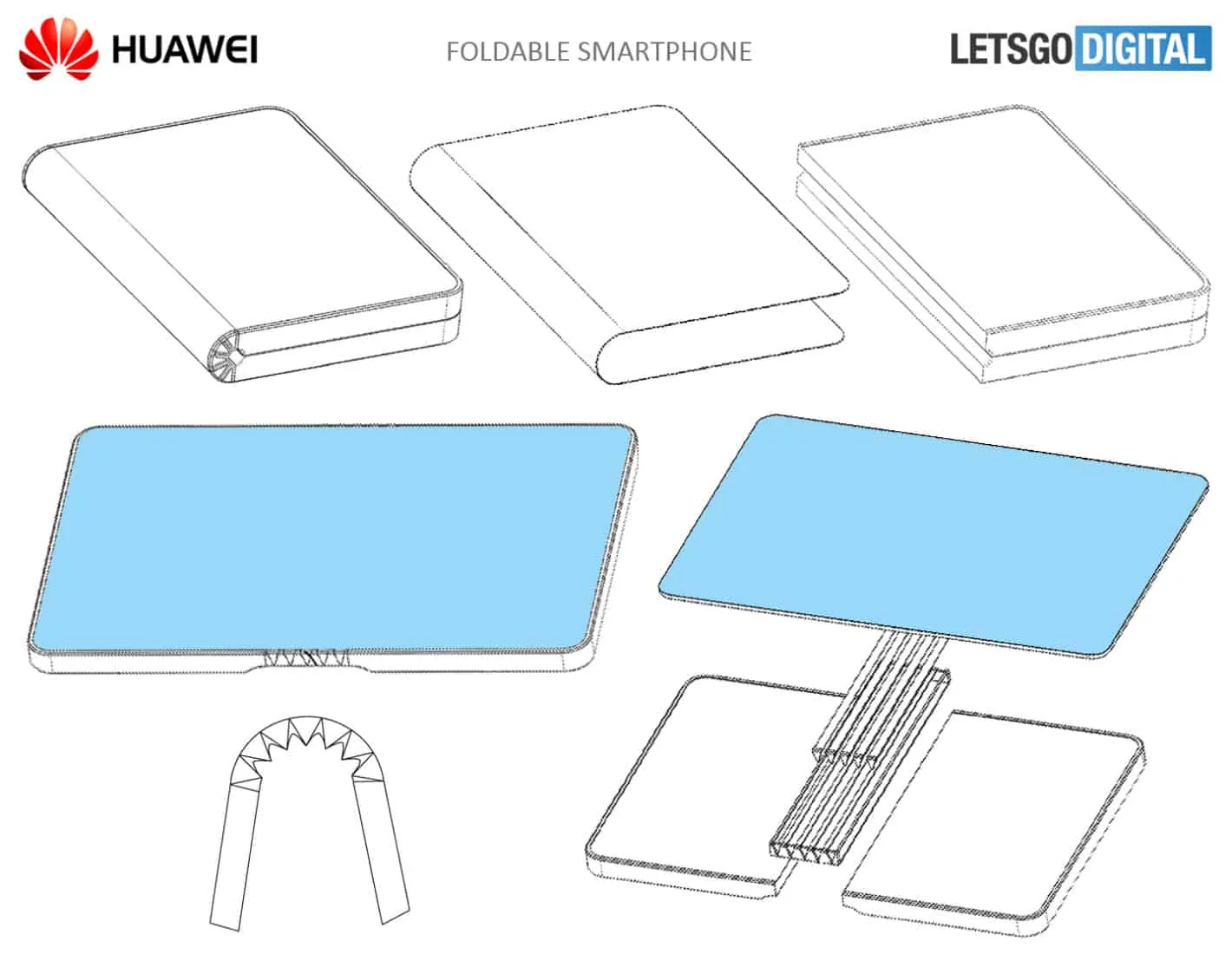Huawei has potentially entered into the upcoming foldable feature foray with a new patent that has appeared on the World Intellectual Property Organization. The images, which have been combined into a larger one by LetsGoDigitial, show a product that is not unlike some of those Samsung has patented previously. The drawings depict a book-style smartphone that combines a hinge mechanism with a flexible display to be placed atop it. Curiously the filing makes note of a “soft supporting structure” and thus it would seem the hinge may not be metallic – as is often the case – but instead some kind of cushion-type material, or else metal that is covered – or coated. It should be pointed out that filings such as these are in no way indicative of a current product in development, or even a future one to make. Companies can and do file patents to protect ideas and concepts that are developed, even if they have no intention to actually do something with the designs.
Ironically the foldable device patent portfolio is quickly becoming a crowded cache of creations, despite a total lack of product availability. Last year, China’s ZTE revived the dual-screen design with its Axon M, released in America exclusively on AT&T, however, said phone was heavily chided for its shortcomings, and for the fact that two separate screens cannot form a solid single one; only a flexible display could. Samsung has for years now, been talking about and even patenting designs for such a device, although at this point it’s difficult to determine just what the final offering will look like when it, purportedly, releases next year.
Lenovo, on the other hand, has actually created functioning prototypes of a foldable tablet which was brought to several trade shows in past years. The product – which has not been announced for sale – is actually the inverse of this one, in that the displays fold out, not inwards. Huawei’s design allows for the product to be protected when the display is not in use which would presumably save it from the single-camera complexity that ZTE’s Axon M suffers from as it too folds outwards. While there is no telling if or when Huawei ultimately decides to produce their foldable device, it’s quite clear that the company is experimenting with the design, and given how much cash it has on hand, it’s quite likely that Huawei could produce a commercial product before Lenovo, or even perhaps Samsung and LG.

